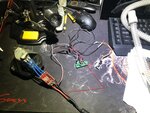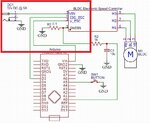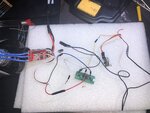- Joined
- Apr 1, 2011
- Messages
- 15,166
- Helped
- 2,898
- Reputation
- 5,808
- Reaction score
- 2,978
- Trophy points
- 1,393
- Location
- Minneapolis, Minnesota, USA
- Activity points
- 113,591
Rather than a blower I'm picturing a plastic bag pressed by a rolling cylinder at 5 or 10 seconds per cycle (normal breathing rate).
1) The roller pushes a single breath into the lungs. Air goes out a tube to the mask. (Add an oxygen feed if possible.)
2) As the roller returns to its original position, the bag fills with exhaled air. This gives a clue that the patient is breathing air out.
3) A valve activates, the roller pushes used air out of the bag to cleansing.
4) A valve activates, the roller returns to its original position as the bag fills with fresh air.
----------------------
There are oxygen concentrators available for homebound respiratory patients. These are expensive new, but you might find a used one cheap. It may be an alternative to an oxygen tank.
1) The roller pushes a single breath into the lungs. Air goes out a tube to the mask. (Add an oxygen feed if possible.)
2) As the roller returns to its original position, the bag fills with exhaled air. This gives a clue that the patient is breathing air out.
3) A valve activates, the roller pushes used air out of the bag to cleansing.
4) A valve activates, the roller returns to its original position as the bag fills with fresh air.
----------------------
There are oxygen concentrators available for homebound respiratory patients. These are expensive new, but you might find a used one cheap. It may be an alternative to an oxygen tank.






